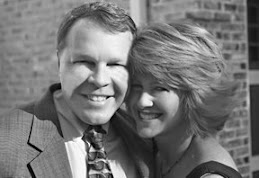I’ve always loved the energy of our Cuban friends. I love
the fact that they can’t talk without using their hands, fall easily into
laughter and will dance at the drop of a straw hat. How could they have such
obvious lust for life when I’d heard their family tales of growing up, facing
repression and ultimately escaping their homeland? This is part of why I felt
the strong draw to see this island before it became the Miami Beach of the
Caribbean.
We’ve now been twice. Our first visit was during the questionable
days when flights were
the only way to visit. We were so befuddled, mesmerized and intrigued by it that we recently returned with six friends to share this perplexing island before travel restrictions were once again tightened. I’m not sure what I can definitively say about Cuba even after several weeks on the island. I still scratch my head as I did before I first stepped foot on its soil.
As a former Spanish colony painted with French, African,
American and Jamaican influences, the breadth of Cuba’s heritage is staggering.
Historical heirlooms- forts, palaces, plazas and colonial towns- dominate the
landscape. You can easily understand why it was the object of desire for
pirates and explorers alike. The people of Cuba have kept the country’s
effervescent, seductive culture alive for centuries, revering their poets,
writers, musicians and dancers. Cuba remains a paradise and an anachronism in a
world that has become ever-more globalized.
It’s hard to ferret out the truth as those you meet share
the “party line” on the brave resistance fighters who saved them from the
corrupt Battista regime. To me, the question remains which is the lesser of two
evils and what lies ahead now that Raul Castro has stepped down. Guides tout
the country’s medical and educational system, low crime rate and lack of drug
use. Lack of resources and even basic
food items, low wages, inadequate housing, corruption and minimal opportunity
for advancement paint a different picture.
The dual currency system also leaves me scratching my head.
Since credit cards and ATMs
aren’t available in Cuba, visitors must come laden
with cash for exchange into CUCs- Cuban Convertible Pesos. These mirror the
dollar except for the 13% exchange rate levied on US dollar exchanges and only
US dollar exchanges (a final little F-U from the Castros?) Locals use CUP,
Cuban Pesos, so prices are posted in both currencies, although goods for locals
are heavily subsidized for those lucky few who can afford them.
What lies ahead? With our mercurial leadership, we opted for
trip insurance for the first time in our lives- not out of fear of storms or
family illness, but out of alarm that the US may close access before our trip.
Travel sanctions actually increased while we were in-country but did not affect
our return. Yes, you can still visit Cuba at this time, but are restricted from
financially supporting government-owned facilities and businesses.
I certainly wouldn’t want to be the owner of one of the
expensive People-2-People tour licenses. I can only equate the situation to
that of a NYC cabbie holding a taxi medallion, watching as Uber and a myriad of
providers chip away at his profits. If Cuba continues to open up as is expected,
the day may ultimately come when Americans can come and go at will, enjoying
luxurious hotels and white sand beaches, outside the confines of P2P
programs. Or maybe not?



No comments:
Post a Comment